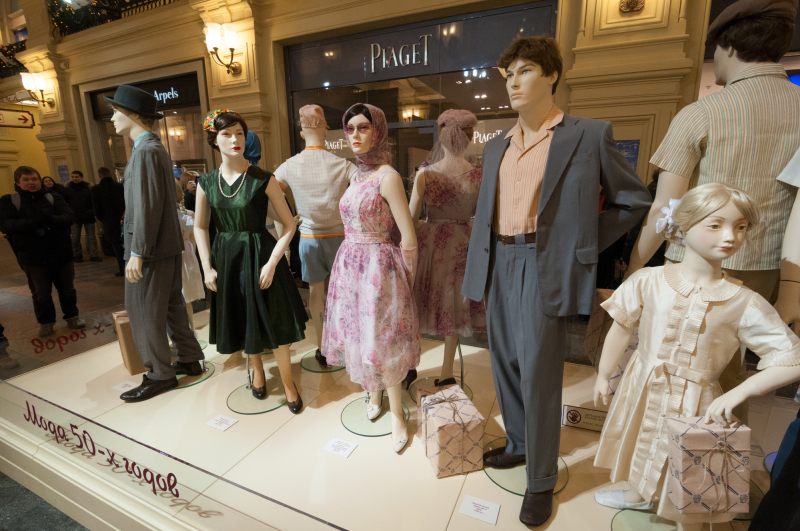The USSR existed for 69 years, from 1922 to 1991. Throughout this time, the country wasn’t stagnant at all – it underwent all kinds of drastic changes in politics, economy, culture, and, of course, fashion. That’s why talking about Soviet fashion in general won’t take us anywhere – it would be more convenient to divide its history into periods.
1920-1930s: Fashion for the working people
In the first years of the Soviet Union, everything had to be basically built from scratch after the First World War and the Russian Civil War – including the clothing industry. Industrialization was key, and fashion had to comply: new clothes had to be functional, plain, comfortable, suitable for work, and inexpensive. The question of aesthetics didn’t matter that much, and the desire to stand out was frowned upon. One of the signature items of this era is a red headscarf, which you can see on Soviet posters as an accessory of hardworking communist women.
Fashion became more light-minded in the 1930s. That’s when mass production of clothes with prints (mostly florals and polka dot) and decorative details, such as frills, flounces, and bows, began.
1940-1960s: Recovering from war
Due to the war and its consequences, fashion inevitably took a step back. Nevertheless, it didn’t cease to exist. The industry was focused on production of more vital items, so women often made clothes themselves from whatever material they could find. For example, they utilized bobbinet and previously-used parachutes to sew dresses – and covered buttons with matching cloth, as it was hard to find enough identical buttons.
Once the economic situation became relatively stable, a tendency for women to look as feminine as possible after the years of struggle emerged, and long fluffy skirts and dresses with an accentuated waist became very popular. Overall, outfits were still pretty modest. Only in the 1960s did women start to wear slightly shorter skirts and other clothes allowing for more movement and a relaxed posture.
1970-1980s: Inspiration from the West
In the last decades of the Soviet era, the influence of Western culture was more noticeable than before, which, in terms of fashion, resulted in the growing popularity of more colorful and extravagant clothes. In the 1970s, flare jeans, floral prints, miniskirts, puffer jackets, and pantsuits for women became trendy. However, the public’s desire for these products wasn’t satisfied by the official market, which led to the growth of illegal resale of imported goods, known as fartsovka.
Later on, fashion became all the more eclectic: neon colors, asymmetric geometric prints, boiled jeans, plastic jewelry, colorful leggings, branded sports clothes… That’s what made it the edgiest era of Soviet fashion – you can see some examples of it here.
To see more of our fashion-related stories, browse ITMO.NEWS using tag Fashion.




